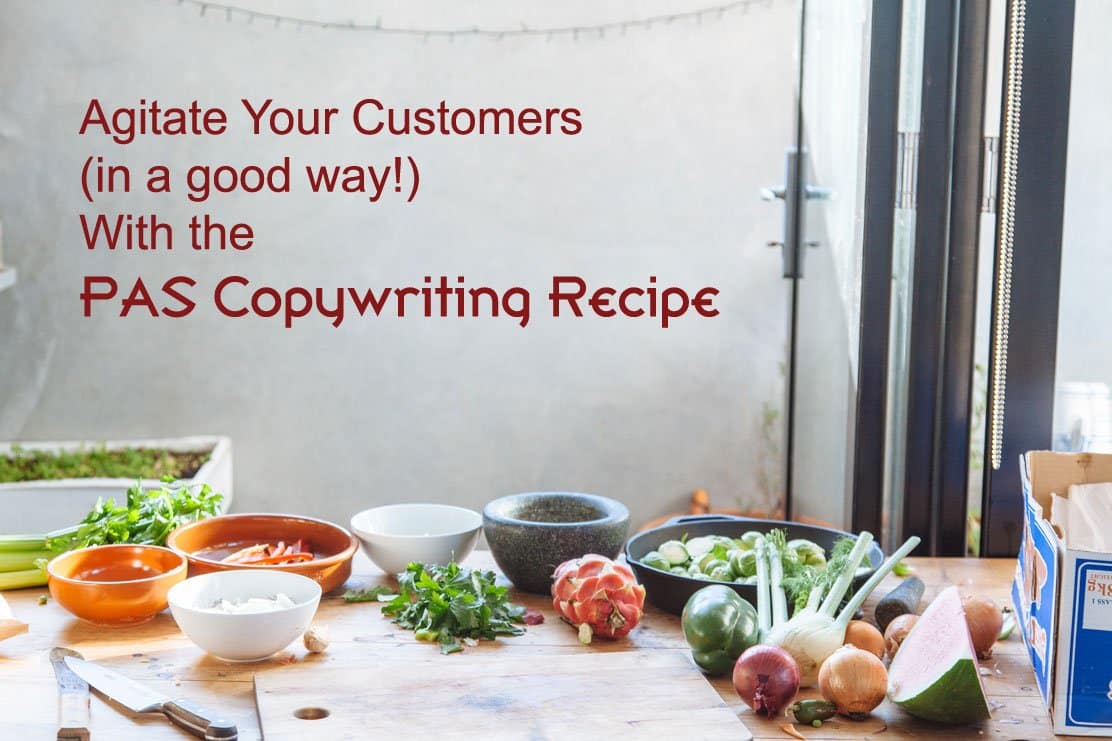
Two of the most important jobs your marketing content should do are:
- Empathize with the audience
- Reassure them that your solution will fix their problem
This is true whether you’re writing sales page copy, a blog post or a Facebook ad.
Your audience is asking this very important question: Will this solve my problem and get me to where I want to be?
One of the old tried-and-true formulas for copywriting that will help you with this is Problem-Agitate-Solve. Sometimes called PAS for short.
Problem
First, understand the audience’s problem.
Put yourself in their shoes. What are their pain points — really?
Why does a man buy a belt? Not because he doesn’t have a belt, but because he needs to hold his pants up.
Why does a financial services company buy a cloud-based data storage, backup and recovery solution? Not because they want to store their data — but because they need to make sure their data stays safe and accessible in the event of a natural disaster or breach in information security.
Now go even deeper.
Why does the man need to hold his pants up? Maybe he’s trying to make a good impression on the person who is interviewing him for a job. Maybe he owns a business and his well-kempt image reassures his customers.
Why does the financial services company need to make sure their data stays safe and accessible? Because losing customer data to hackers would diminish customers’ faith in the company. Because losing the last week’s worth of data would not only look bad and leave customers high and dry, but it might cause legal issues for those customers.
Sure, not all of your audience will have the same problem, but if you can identify the major pain point that the majority of your audience is facing, you will be able to create much more empathy in your copy. Empathy shows that you have the audience’s interests at heart.
Agitate
Now that you’ve identified the problem (the major pain point), stir it up a bit. Show the audience that you understand what really matters to them.
Make the problem seem scarier and strike more of an emotional chord. Share the side effects of not solving that problem.
In other words, carefully pour salt in the wound. Don’t make your audience cry, necessarily, but stir up the problem to strike a nerve and make an impact. You will gain more reader attention.
For example, for the financial services company, would missing data possibly cause issues with customers’ tax returns? Would the inability to access data in the face of a natural disaster cause costly business downtime? What are some worst-case scenarios?
Solve
Now for the cherry on top: Show the reader that they need a solution like yours if they want to solve their problem.
Give them the answer to their original question, Will this solve my problem and get me to where I want to be?
Prove the value of your offering.
Using our data storage example:
- Your customers place their trust in you. Don’t let them down with missing data come tax time. Use our cloud-based backup and recovery service to make sure their information is safe from storms and thieves.
- A storm took out the power lines around your office – and your business can’t afford that downtime. Your customers trust you to take care of them, come rain or shine. When your data is safe in our secure cloud, you can access it any time, from anywhere – and your business will stay open even while the storm rages outside.
You can use Problem-Agitate-Solve in almost any piece of copywriting — from blog posts to banner ads.
It’s effective not only because it helps you create that sense of empathy with the audience, but also because it triggers pleasure/pain motivation. People are motivated to take action by two things: pleasure or pain. But pain is a much stronger motivator. Just use it judiciously!
With PAS, you harp on the pain in the problem and agitate stages, but you touch on the pleasure in the solution. It’s a very compelling formula.
Back to You
How can you use this in your own marketing? Send me a tweet and share your ideas!